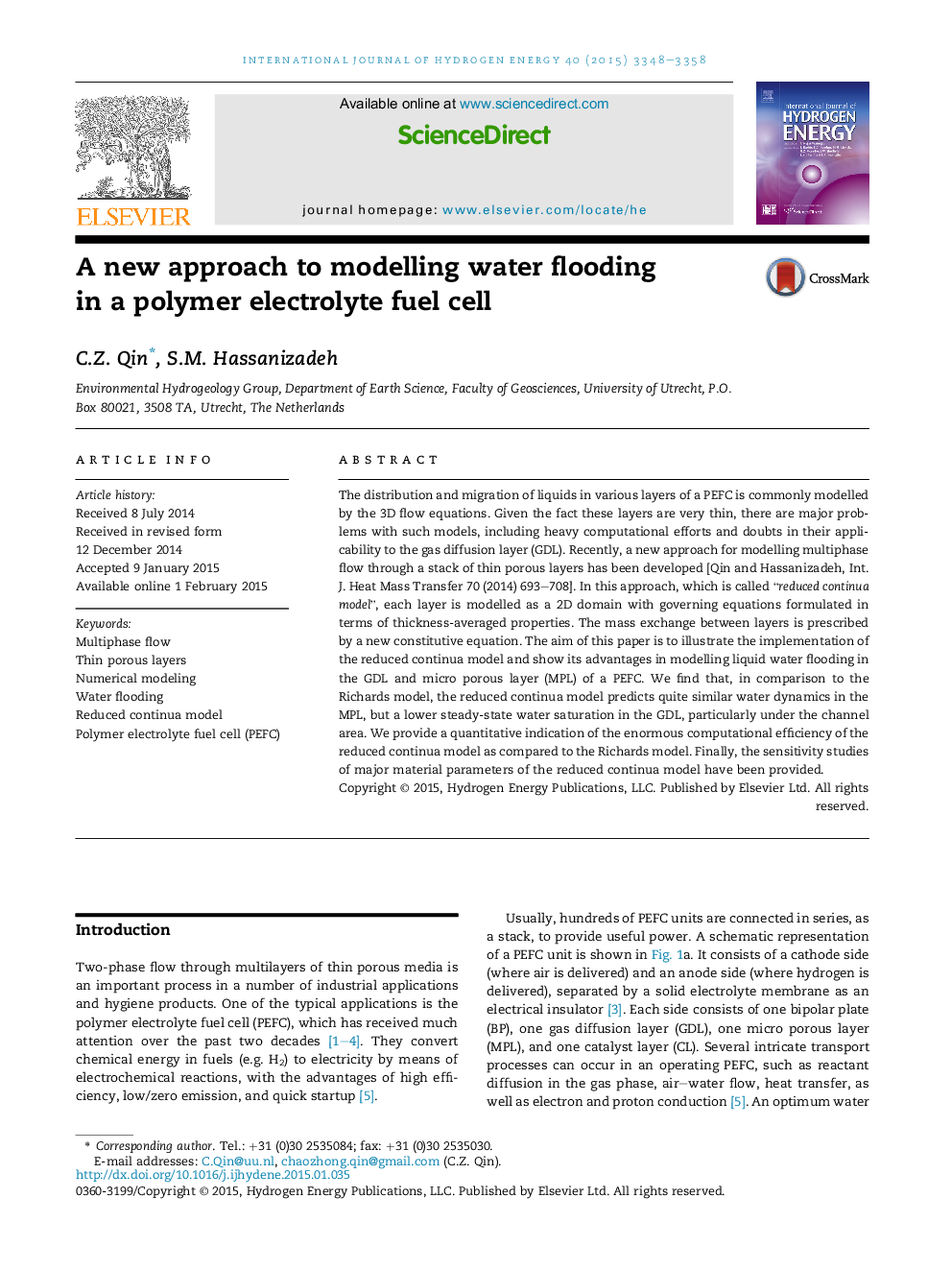| Article ID | Journal | Published Year | Pages | File Type |
|---|---|---|---|---|
| 1272031 | International Journal of Hydrogen Energy | 2015 | 11 Pages |
•We developed a new model for water flooding in polymer electrolyte fuel cells.•The new model is formulated in terms of thickness-averaged material properties.•We conducted numerical comparisons between the new model and Richards model.•We demonstrated the physical and numerical advantages of this new model.•Sensitivity studies of material properties were well conducted by the new model.
The distribution and migration of liquids in various layers of a PEFC is commonly modelled by the 3D flow equations. Given the fact these layers are very thin, there are major problems with such models, including heavy computational efforts and doubts in their applicability to the gas diffusion layer (GDL). Recently, a new approach for modelling multiphase flow through a stack of thin porous layers has been developed [Qin and Hassanizadeh, Int. J. Heat Mass Transfer 70 (2014) 693–708]. In this approach, which is called “reduced continua model”, each layer is modelled as a 2D domain with governing equations formulated in terms of thickness-averaged properties. The mass exchange between layers is prescribed by a new constitutive equation. The aim of this paper is to illustrate the implementation of the reduced continua model and show its advantages in modelling liquid water flooding in the GDL and micro porous layer (MPL) of a PEFC. We find that, in comparison to the Richards model, the reduced continua model predicts quite similar water dynamics in the MPL, but a lower steady-state water saturation in the GDL, particularly under the channel area. We provide a quantitative indication of the enormous computational efficiency of the reduced continua model as compared to the Richards model. Finally, the sensitivity studies of major material parameters of the reduced continua model have been provided.
